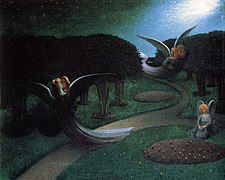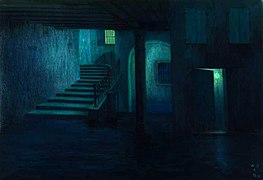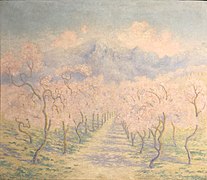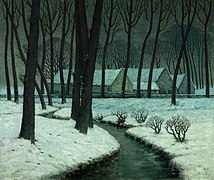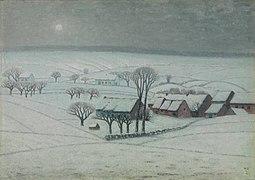
Odilon Redon was a French Symbolist artist.
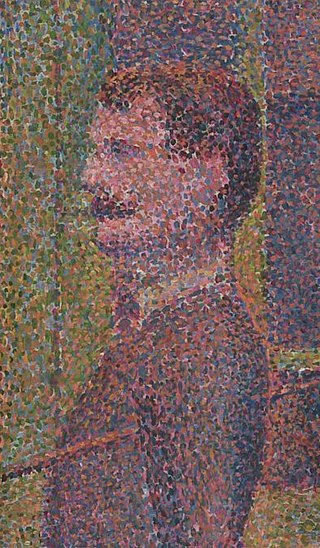
Pointillism is a technique of painting in which small, distinct dots of color are applied in patterns to form an image.

Johannes Theodorus 'Jan' Toorop was a Dutch-Indonesian painter, who worked in various styles, including Symbolism, Art Nouveau, and Pointillism. His early work was influenced by the Amsterdam Impressionism movement.

Félicien Victor Joseph Rops was a Belgian artist associated with Symbolism and the Parisian Fin-de Siecle. He was a painter, illustrator, caricaturist and a prolific and innovative print maker, particularly in intaglio. Although not well known to the general public, Rops was greatly respected by his peers and actively pursued and celebrated as an illustrator by the publishers, authors, and poets of his time. He provided frontispieces and illustrations for Jules Barbey d'Aurevilly, Charles Baudelaire, Charles De Coster, Théophile Gautier, Joris-Karl Huysmans, Stéphane Mallarmé, Joséphin Péladan, Paul Verlaine, Voltaire, and many others. Best known today for his prints and drawings illustrating erotic and occult literature of the period, he also produced oil paintings including landscapes, seascapes, and occasional genre paintings. Rops is recognized as a pioneer of Belgian comics.

Robert Delaunay was a French artist who, with his wife Sonia Delaunay and others, co-founded the Orphism art movement, noted for its use of strong colours and geometric shapes. His later works were more abstract. His key influence related to bold use of colour and a clear love of experimentation with both depth and tone.
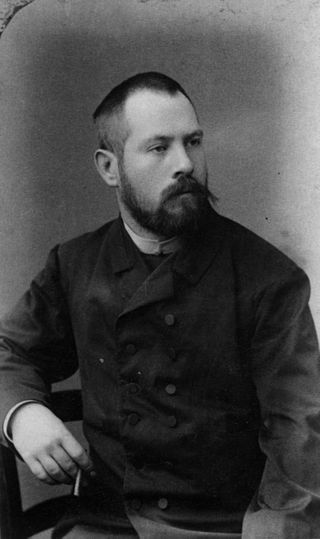
Lovis Corinth was a German artist and writer whose mature work as a painter and printmaker realized a synthesis of impressionism and expressionism.

The Kröller-Müller Museum is a national art museum and sculpture garden, located in the Hoge Veluwe National Park in Otterlo in the Netherlands. The museum, founded by art collector Helene Kröller-Müller within the extensive grounds of her and her husband's former estate, opened in 1938. It has the second-largest collection of paintings by Vincent van Gogh, after the Van Gogh Museum. The museum had 380,000 visitors in 2015.

Henry de Groux was a Belgian Symbolist painter, sculptor and lithographer. His 1889 painting Christ attacked by a mob made when he was only 22 years old established his reputation as an innovative Symbolist painter and ensured his admission to the progressive artistic circles in Brussels. He spent most of his active career in Paris. He produced many works depicting the horrors of the First World War in the latter part of his career.

Isaac Lazarus Israëls was a Dutch painter associated with the Amsterdam Impressionism movement.
Vincent van Gogh lived during the Impressionist era. With the development of photography, painters and artists turned to conveying the feeling and ideas behind people, places, and things rather than trying to imitate their physical forms. Impressionist artists did this by emphasizing certain hues, using vigorous brushstrokes, and paying attention to highlighting. Vincent van Gogh implemented this ideology to pursue his goal of depicting his own feelings toward and involvement with his subjects. Van Gogh's portraiture focuses on color and brushstrokes to demonstrate their inner qualities and Van Gogh's own relationship with them.

James Sidney Edouard, Baron Ensor was a Belgian painter and printmaker, an important influence on expressionism and surrealism who lived in Ostend for most of his life. He was associated with the artistic group Les XX.
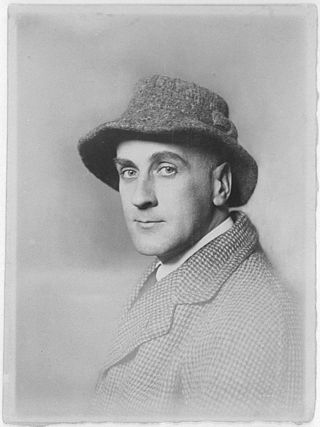
Wilhelm Uhde was a German art collector, dealer, author and critic, an early collector of modernist painting, and a significant figure in the career of Henri Rousseau.
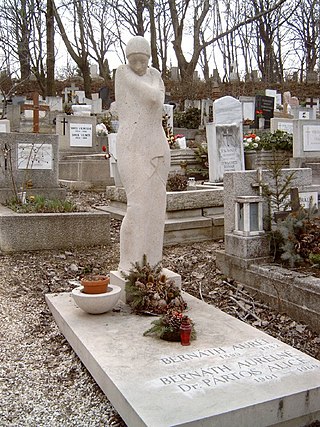
Aurél Bernáth (1895–1982) was a Hungarian painter and art theorist. He studied at Nagybánya with István Réti and János Thorma. Bernath fought as a soldier in the First World War and moved to Vienna in 1921. Bernath's painting style was heavily influenced by the onslaught of German Expressionism. He was invited to Berlin by Herwarth Walden where his work was exhibited at the now-defunct Sturm Gallery between 1922 and 1924. Two years later, he returned to Hungary and joined the KUT, becoming one of the leading figures of the Gresham Circle of artists during the 1930s. He taught at the Hungarian Academy of Fine Arts from 1945 to 1974. From 1948 to 1949, he worked as an editor for the journal Hungarian Art. After 1947, many of Bernath's writings on art theory were published and became very popular.

Charley Toorop was a Dutch painter and lithographer. Her full name was Annie Caroline Pontifex Fernhout-Toorop.
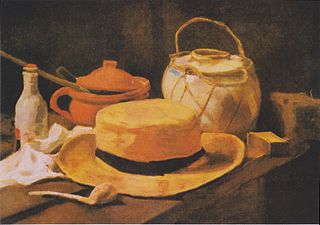
Still Life with Straw Hat also known as Still Life with Yellow Straw Hat and Still Life with Hat and Pipe was painted by Vincent van Gogh in late November - mid-December 1881 or possibly in 1885 in the town of Nuenen.

Wheat Fields is a series of dozens of paintings by Dutch Post-Impressionist artist Vincent van Gogh, borne out of his religious studies and sermons, connection to nature, appreciation of manual laborers and desire to provide a means of offering comfort to others. The wheat field works demonstrate his progression as an artist from the drab Wheat Sheaves made in 1885 in the Netherlands to the colorful and dramatic 1888–1890 paintings from Arles, Saint-Rémy and Auvers-sur-Oise in rural France.
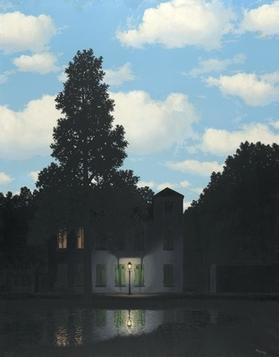
The Empire of Light is the title of a succession of paintings by René Magritte. They depict the paradoxical image of a nocturnal landscape beneath a sunlit sky. He explored the theme in 27 paintings from the 1940s to the 1960s. The paintings were not planned as a formal series. They have never all been exhibited together and are rarely exhibited in smaller groups. The original French title, L'Empire des Lumieres is sometimes translated as singular, The Empire of Light,and sometimes as plural The Empire of Lights. Other translations include The Dominion of Light: making the distinction: "an empire exists in relation to a ruler, a dominion does not necessarily require this.”

Tree Roots is an oil painting by Vincent van Gogh that he painted in July 1890 when he lived in Auvers-sur-Oise, France. The painting is an example of the double-square canvases that he employed in his last landscapes.
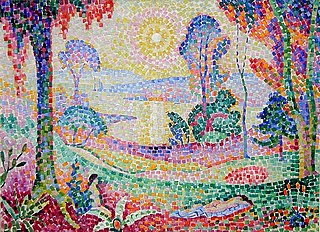
Coucher de soleil no. 1 is an oil painting created circa 1906 by the French artist and theorist Jean Metzinger (1883–1956). Coucher de soleil no. 1 is a work executed in a mosaic-like Divisionist style with a Fauve palette. The reverberating image of the Sun in Metzinger's painting is an homage to the decomposition of spectral light at the core of Neo-Impressionist color theory.

Álvaro Casanova Zenteno was a prominent marine painter and of historic naval warfare, a statesman his art is classified as realist, expressionist, classical, and romantic.


